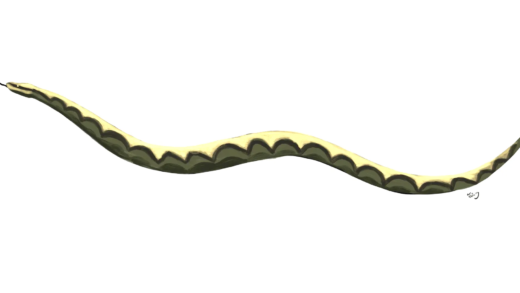Sun spiders, also known as wind scorpions, are fascinating arachnids that are not dangerous to humans. They exhibit remarkable hunting behaviors, relying on speed and agility to capture prey. Their unique characteristics, such as a lack of venom and powerful jaws, make them intriguing creatures within the arachnid world.
What is a sun spider?
A sun spider, also known as a wind scorpion, is not a true spider but belongs to the class Arachnida. These fascinating creatures, scientifically classified as Solifugae, are primarily known for their impressive speed and unique hunting methods. They can reach speeds of up to 10 miles per hour, making them one of the fastest arachnids. Sun spiders have a distinct appearance, characterized by long legs and large pedipalps, which they use for sensing their environment and capturing prey.
Why are they called wind scorpions or camel spiders?
The quirky names of sun spiders, such as wind scorpions and camel spiders, stem from their unique characteristics and habitats. The term “wind scorpion” likely comes from their swift movements across sandy terrains, resembling the speed of the wind. “Camel spider” is a nickname attributed to their association with desert environments, where they often inhabit. These names can be misleading, as sun spiders are not scorpions and do not possess a venomous sting.
Sun spider vs. actual spiders and scorpions
Sun spiders differ significantly from true spiders and scorpions. Unlike spiders, they lack silk glands, so they cannot spin webs. Additionally, their body structure is distinct; sun spiders have a fused cephalothorax and abdomen, giving them a unique silhouette. In contrast to scorpions, they do not have a stinger. Instead, they possess powerful jaws that they use to capture and consume their prey. Understanding these differences helps clarify the classification and behavior of sun spiders.
Sun spider classification
Sun spiders belong to the order Solifugae, which is a group within the class Arachnida. This order is further divided into various families and species, each exhibiting unique adaptations to their environments. The classification highlights their evolutionary history and ecological roles. Sun spiders are primarily found in arid regions, where they play essential roles in controlling insect populations. Their classification within the arachnid family emphasizes their distinct evolutionary path compared to other arachnids.
Sun spider speed
Sun spiders are known for their astonishing speed. These little critters can scuttle at impressive rates, reaching up to 10 miles per hour! This speed is crucial for their survival, allowing them to quickly evade predators and chase down their prey. Their long legs contribute to this remarkable ability, providing both agility and balance as they navigate their arid habitats. In fact, they are often considered the cheetahs of the arachnid world due to their swift movements. Imagine running as fast as a car on a city street – that’s the kind of speed we’re talking about here!
Unique features of sun spiders
Sun spiders possess a range of unique features that distinguish them in the arachnid family. Their most notable characteristic is their large, powerful jaws, which they use to capture and consume prey. Unlike other arachnids, they lack venom, relying instead on their strength and speed to hunt. Another distinctive feature is their fused body structure, combining the cephalothorax and abdomen into a single unit. This gives them a streamlined appearance, ideal for rapid movement. Additionally, their pedipalps, which resemble pincers, are highly developed and aid in sensory perception, allowing them to navigate their environment effectively.
Sun spider diet
The diet of sun spiders primarily consists of insects and other small invertebrates. They are voracious predators, using their speed and agility to hunt down prey. Once they spot a potential meal, they can launch a quick attack, capturing it with their strong jaws. Their hunting technique often involves ambushing unsuspecting insects, making them effective hunters in their desert habitats. Sun spiders do not spin webs like true spiders; instead, they actively hunt, making them fascinating creatures to observe in the wild.
Where to find sun spiders
Sun spiders thrive in arid environments, making deserts and sandy areas their preferred habitats. You can commonly find them in regions such as the southwestern United States, parts of Africa, and the Middle East. They tend to hide under rocks or in burrows during the day, emerging at night to hunt. Their preference for dry, warm climates means they are often spotted in desert landscapes, where they can easily blend into their surroundings. If you’re on a desert adventure, keep your eyes peeled – you might just catch a glimpse of these speedy arachnids!
Are sun spiders dangerous to humans?
Sun spiders, also known as wind scorpions, are not dangerous to humans. Despite their menacing appearance and fearsome reputation, these creatures lack venom and do not possess a stinger like true scorpions. Instead, they rely on their speed and powerful jaws to hunt and defend themselves. The myths surrounding their danger often stem from their aggressive hunting behavior and large size. While they can deliver a painful bite if threatened, it is not life-threatening. Sun spiders play a vital role in controlling insect populations in their habitats, making them more beneficial than harmful to humans.
Sun spider hunting behavior
Sun spiders exhibit fascinating hunting behaviors that set them apart from other arachnids. They are primarily nocturnal hunters, using their speed and agility to catch prey. Their hunting techniques include ambushing unsuspecting insects or chasing them down with remarkable quickness. Sun spiders can detect vibrations and movements in their environment, which helps them locate potential meals. Once they identify a target, they can launch an attack with impressive speed, using their strong jaws to grasp and immobilize the prey. This hunting method emphasizes their predatory nature and adaptability in arid environments.
Interesting facts about sun spiders
Sun spiders are full of surprising traits that make them intriguing. Here are a few fun tidbits about these unique arachnids:
- Speed Record: Sun spiders can run at speeds up to 10 miles per hour, making them some of the fastest arachnids on the planet.
- Size Variation: Depending on the species, sun spiders can range from a few inches to over 6 inches in length, showcasing significant diversity.
- Unique Mating Rituals: Males perform elaborate courtship dances to attract females, which can include displaying their pedipalps.
- Survival Skills: They can survive in extremely hot environments and are often seen burrowing into the sand to escape the heat during the day.
These facts highlight the unique adaptations of sun spiders and their fascinating role in their ecosystems.





Comments are closed.